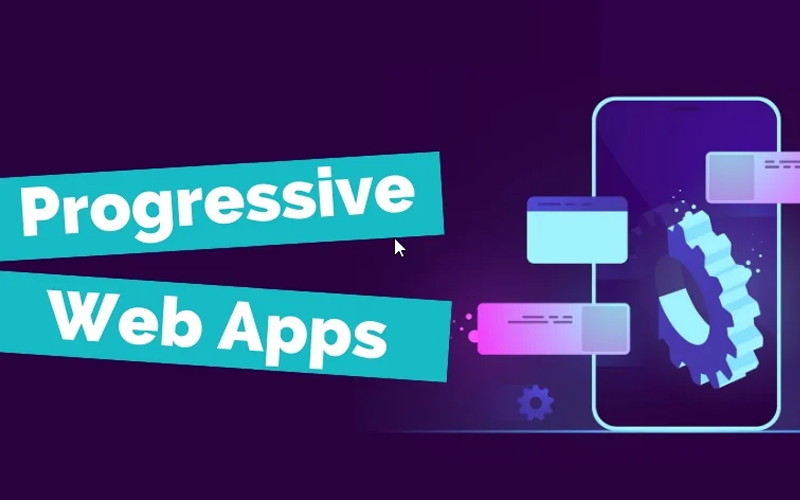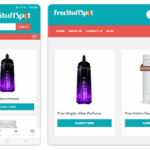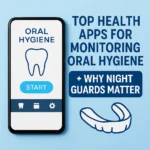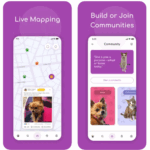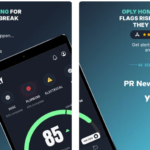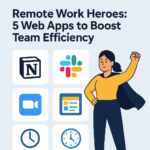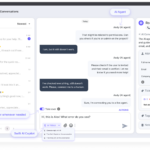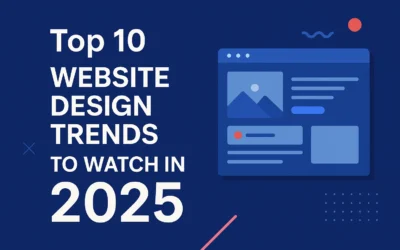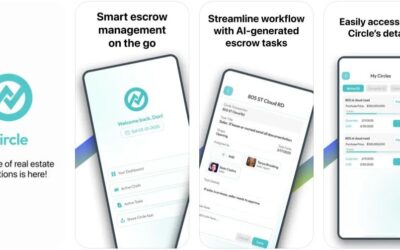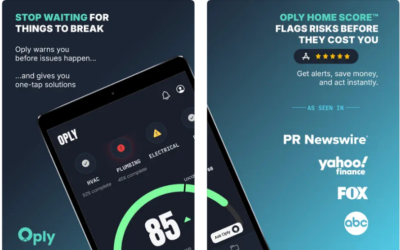What is a Progressive Web App (PWA)?
Progressive web apps often look and feel just like regular mobile apps, so they’re different than traditional websites. This makes them great for creating a seamless user experience from a smartphone or tablet. These websites also take advantage of both web development and mobile app development practices.
Progressive Web App Examples
1. Twitter Lite
Twitter’s progressive web app has been majorly successful compared to its previous mobile app, it helps improve engagement rates, reduce data usage and improve loading times.
Google found that following progressive web apps led to other noteworthy companies, such as Facebook and Alibaba. Progressive web app development focus on providing a seamless user experience with reduced load times and high-quality features.
2. Trivago
Trivago introduced its own personal assistant in 2017, and it was a big success. It saw a 97% increase in clickthrough rates to offers on hotels and performed well during Google’s Lighthouse audit. The PWA-enhanced Trivago website is now available in 55 countries and 33 languages. Over the past six months, more than 500,000 users have installed the new site on their home screens and demonstrated high consumer interest. Over the past month, people who visit your site using their smartphones now make at least twice as many visits as before. They make around 0.8 repeat visits without a PWA installed on their phone but with one installed, they’ll make 2 visits each!
3. Pinterest
Every step of the way, Pinterest’s PWA was sluggish and didn’t meet the needs of its audience. This was due to it being old-school in a world where people mostly use mobile these days. They realized they needed to make their website faster, simpler, and more responsive to drive engagement on mobile – so they redesigned their site and are now wildly successful in driving downloads, logins & native app installs. Eventually, they decided to invest in a chatbot since there was a significant possibility of increasing the conversation rate.
4. AliExpress
AliExpress is a popular online shopping site. You can find almost anything on the site, including clothing, gadgets, and household appliances. After implementing an AI-powered website it saw a 104% increase in customers!
The mobile web has been significantly improved and the user experience conveyed is better than ever. It’s an approach that really showcased its worth with a significant boost in conversion rates (82%).
5. Flipkart
Flipkart has had success with its app-only platform, so it shut down its website. However, it was a very convenient tool for consumers to make shopping decisions, and development was much more difficult than the company had anticipated with the two apps. They made a decision to roll back their plan and be direct competitors with Amazon which they saw as their only real competitor in this space. They added features that allowed the mobile web to operate instantly, work offline and re-engage people. Platform switching has made these apps more and more popular. They’ve quickly become the most popular platforms across different networks
How does a PWA work?
Progressive web apps function differently from all web pages and native apps, and it’s important to understand how they work for your business. When using a PWA, you never need to worry about losing features or data. New features will be added to the app automatically as soon as your website updates.
PWA apps also come with other cool perks like the ability to work offline, new data notifications, and various other extra features. Web pages on your website are showing up in full functionality across a range of browsers. This happens at the same time as people who visit, which eliminates any crashes or other negative effects.
PWAs have a few distinct features. They are speedy, lightweight, and cross-platform.
The defining features of progressive web apps include:
- The progressive web app is sensitive to what browser a user is using and runs well on all platforms. This makes it easy for users to get it in every location and make the experience consistent for them.
- This means the content will work optimally regardless of the size or type of device you’re using.
- In today’s day and age, Google is the go-to search engine, and making your content ‘Google-able’ can be a huge factor in determining its success.
- prioritizing PWA improves their ranking
- These headphones are very reliable in low-connectivity areas. They also offer support offline with the help of caching.
- Mobile applications are usually made to look like the mobile app they accompany. Many designers these days try to change the design of their apps so they mimic what you see on your phone, in order to make it feel more native.
- Safe features include easy-to-use HTTPS support to ensure a proper and unique address which doesn’t allow any sort of unsafe person to access your content.
- Push notifications are easy to access through “Push API”.
- Fresh content is synced on a regular schedule with a script and updates as needed
- This PWA looks great and is easy to share on social media.
- PWA installable: Users can add a PWA icon to their phone’s app drawer without having to go through the struggle of installing it from Playstore or Apple Store
Benefits of Progressive Web Apps (PWAs)
PWAs benefit your business by providing a nicer user experience that is more satisfying than what websites provide.
- When you access a PWA website for the first time, only the resources necessary for that particular initial page are loaded, thus improving performance. Once your navigation speed is getting used to it, you can go to other pages without too much trouble.
- Push notifications from your web service are really engaging now! They increase the amount of time users spend on your site and can be helpful in increasing engagement on your site.
- PWA apps typically only need a tiny amount of storage space and can completely run inside the browser. For example, Twitter’s PWA version is just 600kb! They also offer more features than their native app counterpart.
- A PWA might not require a lot of data at all because most of the resources it needs are generally available offline. The level of quality is also high due to minimal media usage and optimized images.
- Offers offline support — as the service worker caches CSS, JavaScript, and even images to expedite repeat visits
- The process of app development is becoming more efficient as you can create a single (or even group) code for all browsers and platforms. At the same time, you won’t need to spend resources on developing apps for different platforms or risk getting stuck with unfinished work.
- In order to create a reliable PWA strategy, there are several main factors that you should focus on. Some of these include: developing your app’s architecture, planning for the future, and monitoring performance.
It’s a good idea for you to plan ahead for your web app’s usage outside of the browser. Remember to keep in mind what your users need from your app and what kind of interface they’re looking for. When you remove the UI, people assume that it’s even more usable.
To make things easier, traditional website development should have some kind of PWA strategy. This is the first step and can help lay the foundation for your website effectively.
Responsive web design models websites to be smaller and more accessible. Because of this, they can scale up to be much more detailed than their traditional counterparts.
Not all browsers provide things like back buttons, refresh buttons, and other good features. Because of the way Progressive Web Apps work (delivering on your app’s expectations and avoiding the crutches a browser provides), these are side effects.
PWA Use Cases
PWAs are no different than other applications. When you decide to build a PWA, the best time to plan it is when you’re just about to build your app. This is often a difficult decision to make, depending on what type of application you are considering. Businesses should first figure out who their users are and what their most important user behaviors are so they can decide which type of application will best suit them. There are certain cases where you may not want to use a PWA, such as if your site uses complicated technology and needs a lot of maintenance
- You have a shortage of space on your device, you need to continue operating while fast-loading information as it comes in, and you don’t want to consume greatly a lot of data.
- You want to continue focusing on both the web and mobile
- When developing an app for your app store, you also need to think about your app’s ASO strategy. A native app is a priority, but you have a business strategy that plans out what content should be hidden and shown to different audiences.
- PWAs don’t have any way to use Bluetooth, so having it on your device is not a priority.
- You can’t access a mobile site or mobile app on iOS 11.3, but you do have the option of running a progressive web app on your iOS device. PWAs offer features like offline access and push notification capabilities which some users don’t have with traditional app versions.

